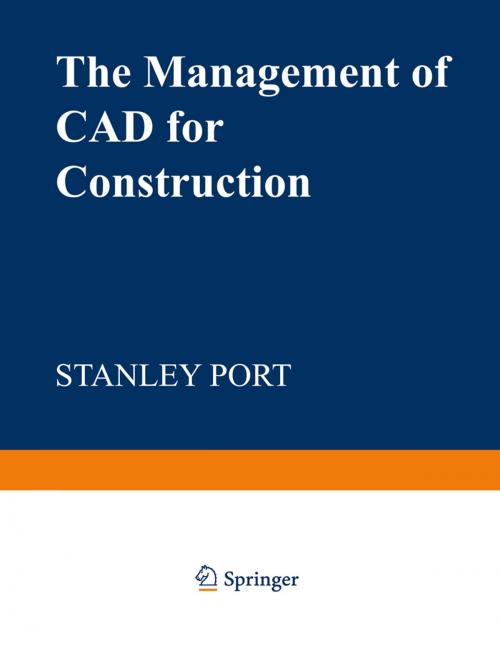The Management of CAD for Construction
Kids, Natural World, Nonfiction, Reference & Language, Education & Teaching, Science & Nature, Science| Author: | Stanley Port | ISBN: | 9781468466058 |
| Publisher: | Springer US | Publication: | December 6, 2012 |
| Imprint: | Springer | Language: | English |
| Author: | Stanley Port |
| ISBN: | 9781468466058 |
| Publisher: | Springer US |
| Publication: | December 6, 2012 |
| Imprint: | Springer |
| Language: | English |
In the era of Information Technology, the computer is the machine-tool. Designers and planners are information workers and many have turned to CAD technology, hoping to find something that will ensure survival in the increasingly competitive business climate. The new problem relates not to any limitations of systems, but to the lack of knowledge on how to implement, manage and control the CAD technology. This book is aimed at design professionals, planners and managers. Although references and examples relate to building and construction work, most of the principles are unlikely to differ whatever the application. As a result, it should be useful in the fields of mechanical engineering and manufacturing industry too. Chapter 13 deals with applications in construction planning, space planning and facilities management. Emphasis throughout is on people, responsibilities, applications, organisation and procedures. The design process is highly interactive. Manual drawing, or use of a computer drafting system to mimic this, inevitably leads to inconsistencies within in the design information. Computer modelling of projects presents better opportunities and the many techniques range from 2-D modelling to solid modelling. A blend of 2-D and 3-D methods to suit the application is essential today. System planning itself requires a carefully managed feasibility study comprising preliminary and detailed phases. Objectives and requirements of the office must be set down. Then there is something to compare the available systems with. The chosen system must be capable of evolving to meet an ever-changing future.
In the era of Information Technology, the computer is the machine-tool. Designers and planners are information workers and many have turned to CAD technology, hoping to find something that will ensure survival in the increasingly competitive business climate. The new problem relates not to any limitations of systems, but to the lack of knowledge on how to implement, manage and control the CAD technology. This book is aimed at design professionals, planners and managers. Although references and examples relate to building and construction work, most of the principles are unlikely to differ whatever the application. As a result, it should be useful in the fields of mechanical engineering and manufacturing industry too. Chapter 13 deals with applications in construction planning, space planning and facilities management. Emphasis throughout is on people, responsibilities, applications, organisation and procedures. The design process is highly interactive. Manual drawing, or use of a computer drafting system to mimic this, inevitably leads to inconsistencies within in the design information. Computer modelling of projects presents better opportunities and the many techniques range from 2-D modelling to solid modelling. A blend of 2-D and 3-D methods to suit the application is essential today. System planning itself requires a carefully managed feasibility study comprising preliminary and detailed phases. Objectives and requirements of the office must be set down. Then there is something to compare the available systems with. The chosen system must be capable of evolving to meet an ever-changing future.















